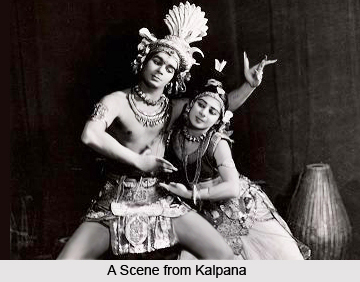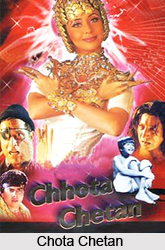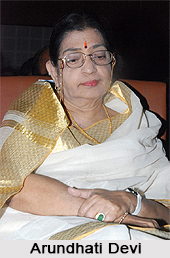Kalpana is definitely a masterpiece of Indian cinema and it is almost impossible to categorise indeed Kalpana is the artistic seed of Uday Shankar. It has remained a model for even the most discerning of filmmakers.
Till date Kalpana (Imagination) is the only film ever made by the legendary modern Indian dancer and choreographer, Late Uday Shankar. It is in every sense of the word an "art" film, a director`s film, which attempted and succeeded in achieving the total symbiosis of voice, dance and music four years in the making. The film was made in Hindi in the year 1948 but was shot at the Gemini Studios in Chennai.
This film by Indian classical dance legend Uday Shankar`s Kalpana was created and shot long before Hindi cinema established its position as the money-churning industry it is today. And as one continues to strive to find a middle path between commercial entertainment and meaningful cinema, one can relate to Kalpana which dealt with the need for art to survive in an increasingly consumerist world.
 The autobiographical plot in the film is interspersed and hues with the scenes of an imaginary world (Kalpana) that lies at the core of the mind of the dancer. There is a point after which reality intertwines with the surreal to such an extent that it becomes difficult to separate one from the other. It is narrated almost entirely in dance form, with no less than 82 dance sequences piecing the film together.
The autobiographical plot in the film is interspersed and hues with the scenes of an imaginary world (Kalpana) that lies at the core of the mind of the dancer. There is a point after which reality intertwines with the surreal to such an extent that it becomes difficult to separate one from the other. It is narrated almost entirely in dance form, with no less than 82 dance sequences piecing the film together.
Kalpana is a musical metaphor, which is danced, based on a scenario, which is only a pretext-the refusal by a producer to accept the scenario of a young scenario. Kalpana, for the first time, introduced the concept of Arts for Arts sake in films. It was unprecedented in the film history, as no one had ever before made a film for the sake of creativity. In many ways it opened several avenues for the filmmakers. The choreography of the film has especially been conceived for the camera.
The film was hailed for a number of things: the audacity in the use of lightning, the sets and the camera movement. Certainly the scenes of works on assembly lines and in the fields, which have been expressed in dance, in a semi-expressionist style and the effects on the light and darkness, are of a startling beauty.
The film was financed by the maestro himself, and the storytelling technique was unique and ensnaring. The dance movements are mesmerizing the unconventional choreography and the picturisation offering a dreamlike ambience. A brilliant sequence in the film shows how men have gone from using machines for the purpose of development to turning into machines themselves. At 155 minutes, though, the many dance pieces might seem repetitive, and Shankar seemed to have wanted to pack in a little too much of it.
In this metaphor of dreams founded in a newly independent country, the world saw a successful synthesis of Indian modernity and of the art of cinema. This splendid and ambitious film was a total contrast what was being made in India at that time.
Kalpana is indeed an accomplishment of hallucinatory, domestic frontiers of soulful expressionism and ecstatic beauty doesn`t just include dance sequences the primary physical vocabulary of which is unarguably nothing else but dance.






